
 |
Two Hexaflexagons |
Flexagons have been around since 1939. The most popular iterations are the Hexaflexagons, or those shaped like a hexagon. By judicious folding of a model, one can reveal all of its faces, and in different orientations. The effect seems almost magical, and creative coloring or drawings on the faces can make for some highly entertaining results.
There is considerable detailed historical information and examples of these devices, so I'll not redundantly repeat it here. If you are unfamiliar with Flexagons, then this is a good place to start reading:
[https://en.wikipedia.org/wiki/Flexagon]
I have been constructing hexaflexagons for friends, most of whom
never had seen such a toy, since before Martin Gardner made them
famous in one of his marvelous books. Back in high school, my
brother came up with a mimeographed, type-written sheet of
instructions for making many different models.
To that end, sturdy materials are required. A flexagon made simply by folding a strip of paper will not last long, and such a unit can be impossibly difficult to fold or even construct if it has a lot of faces.
My tried-and-true design is as follows:
Using the recommended materials, I have created models of up to twelve
sides without any flexing issues. Be aware, however, that because
of the gap (hole) in the middle, it is easier than usual to jam the unit
in mid-fold if not manipulated carefully. Having done so,
there is no recourse but to unravel the thing and re-fold it.
To help with such a reconstruction, I pre-mark the spot where the
unit is taped last, because that is the best place to 'break' it for repair.
I have included specifications for two models — the first
because it is my favorite, and the second because I believe that nobody else
has posted instructions for it. The numbers are provided for folding
purposes; they can be written on the faces with a light pencil, then erased later.
SEPTAHEXAFLEXAGON — 7 FACES
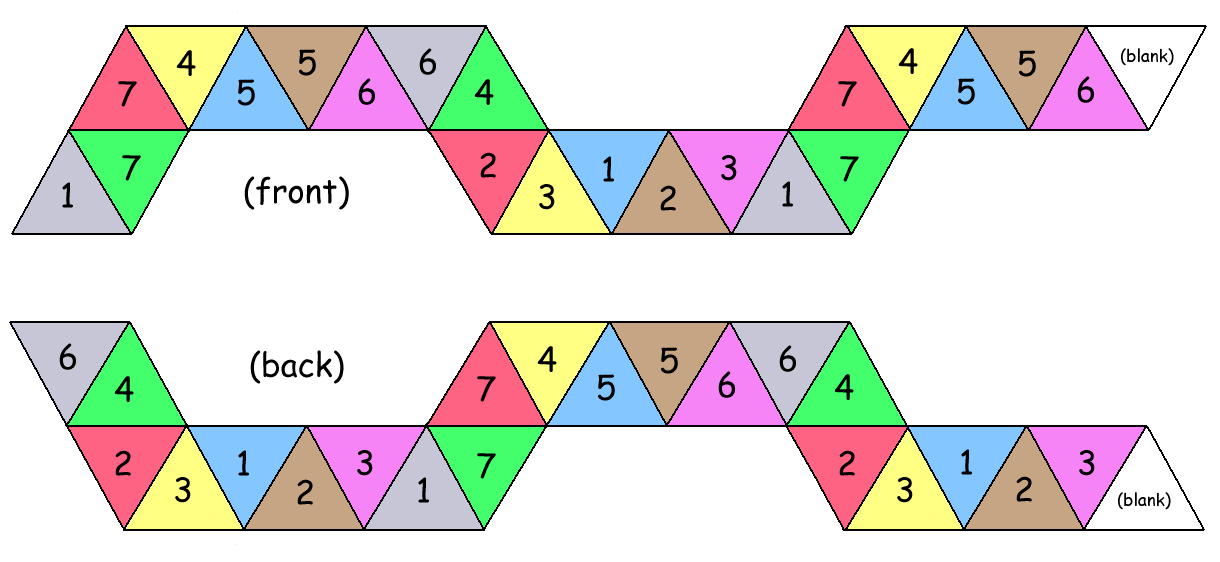
If you employ a color-scheme similar to the one shown, then each of
the seven faces will appear with a unique pair of alternating colors
on the pieces. I like to put red and green on Side #7,
because I frequently place a Christmas-related greeting there.
Here is the Tuckerman Traverse (cheat-sheet) of the possible moves on this design:
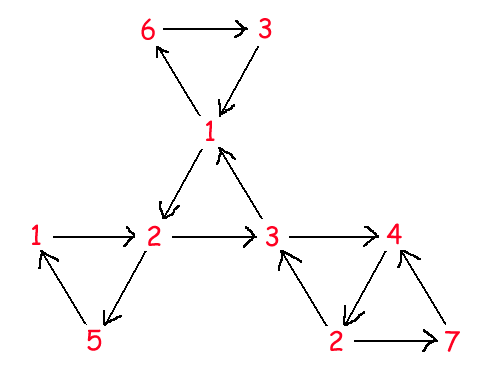
HENDECAHEXAFLEXAGON — 11 FACES
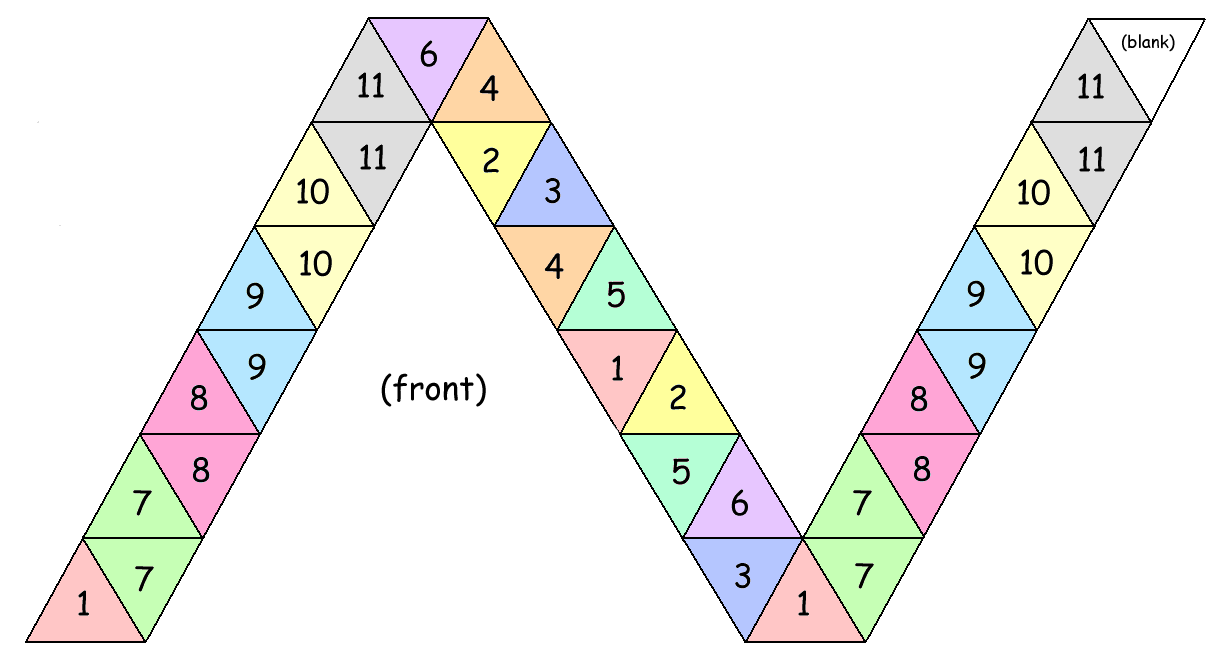
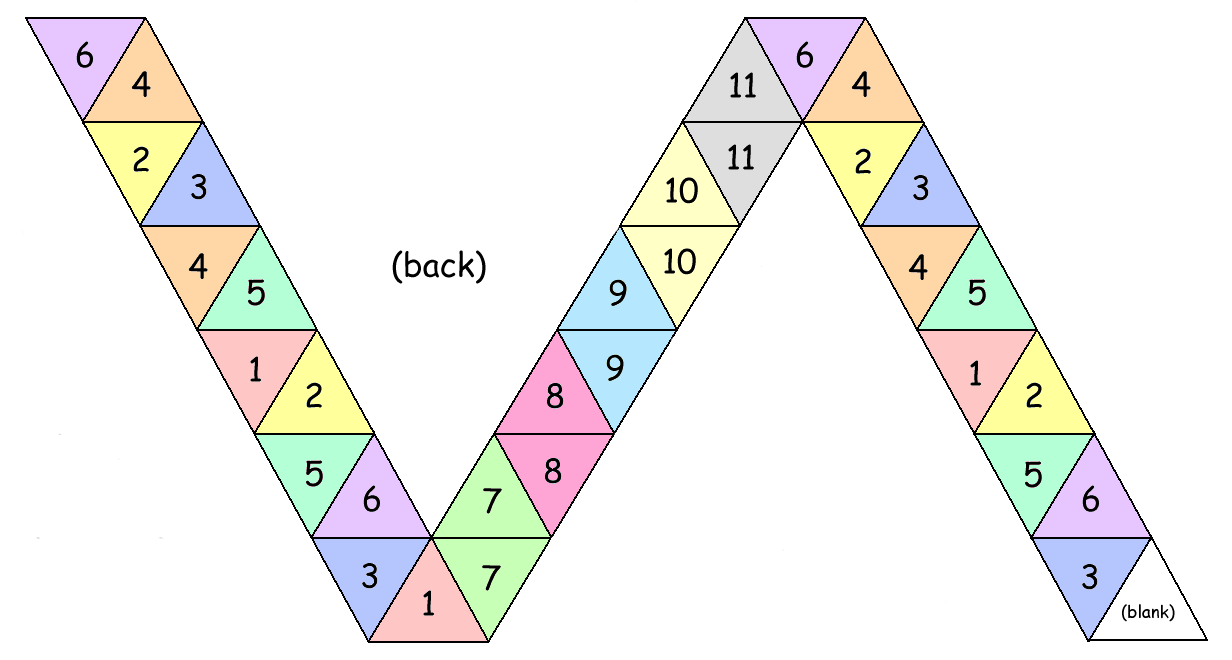
The Tuckerman Traverse:
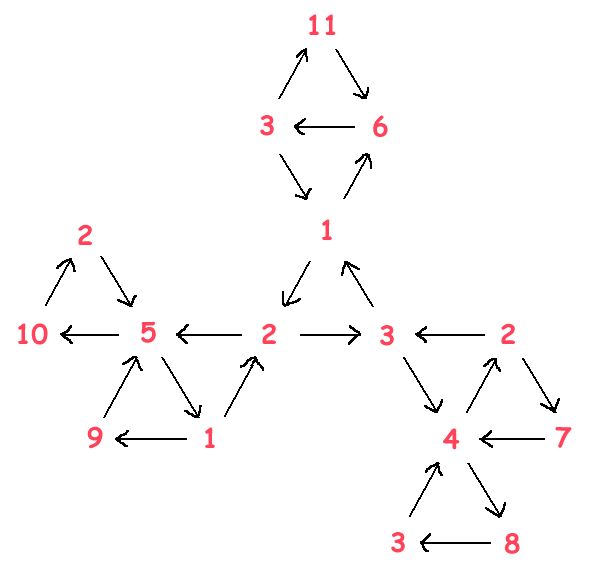
I also have instructions for Hexaflexagons of 4,5,6,9,10,
and 12 faces; but those already have been published elsewhere.